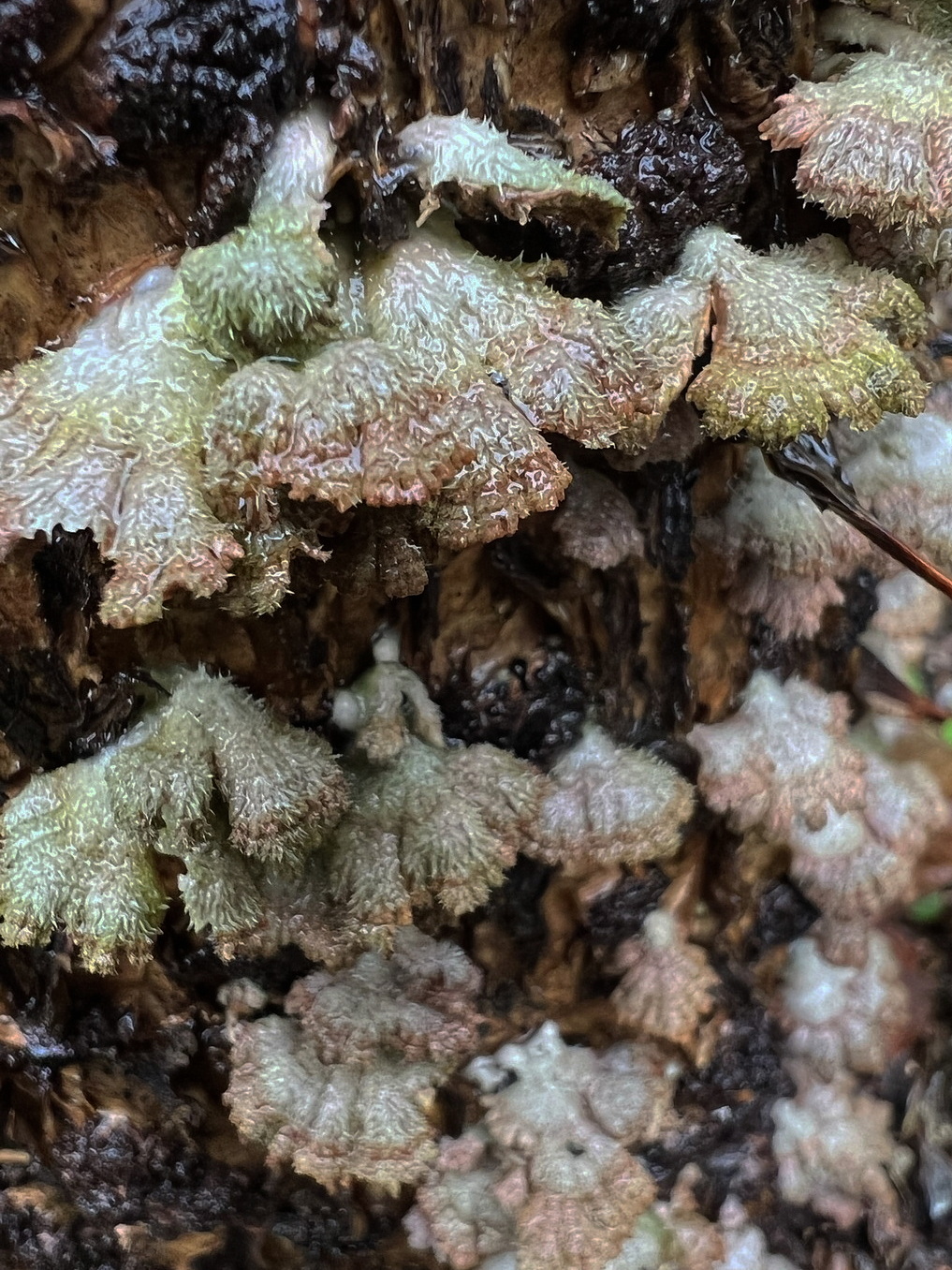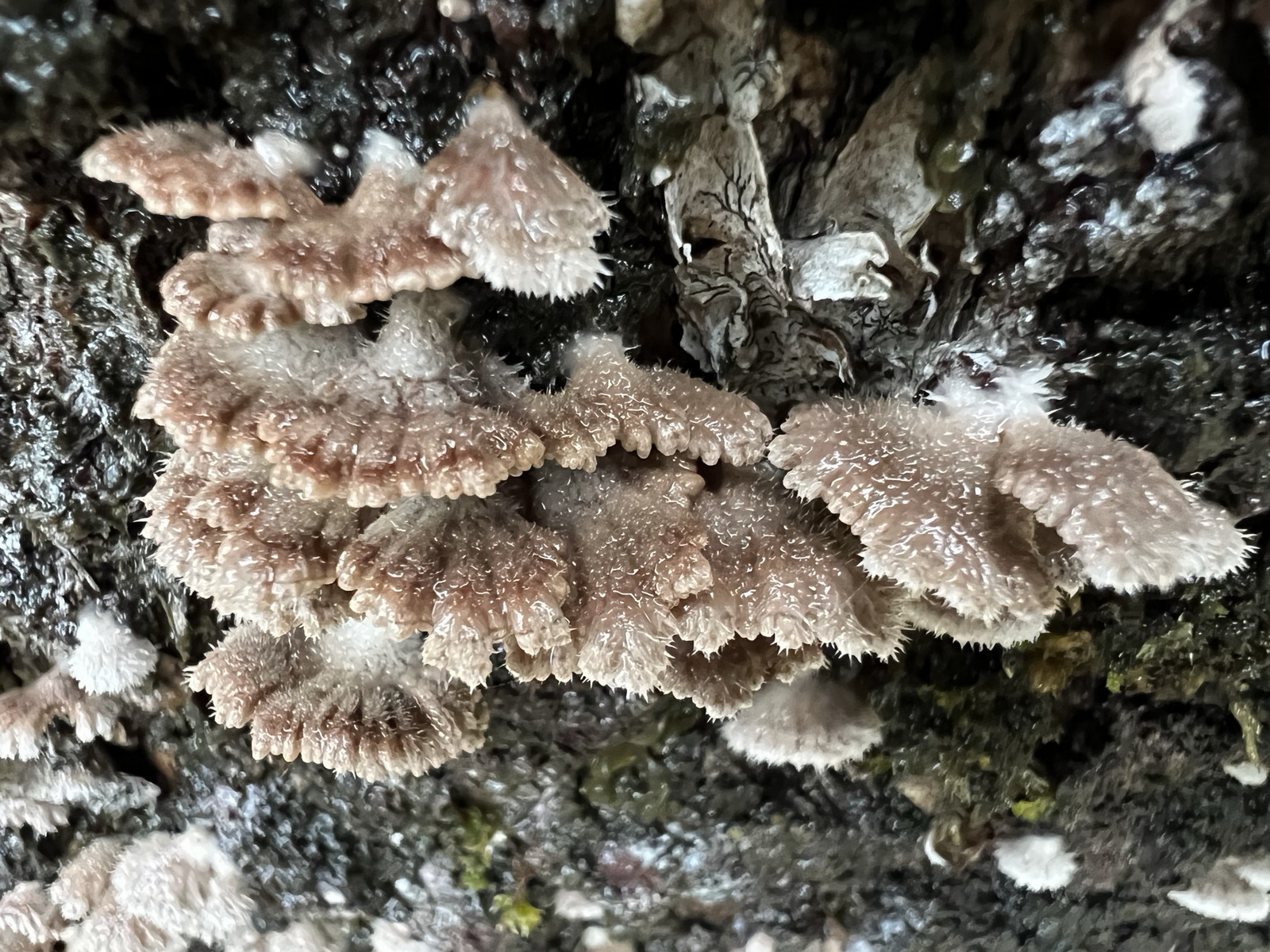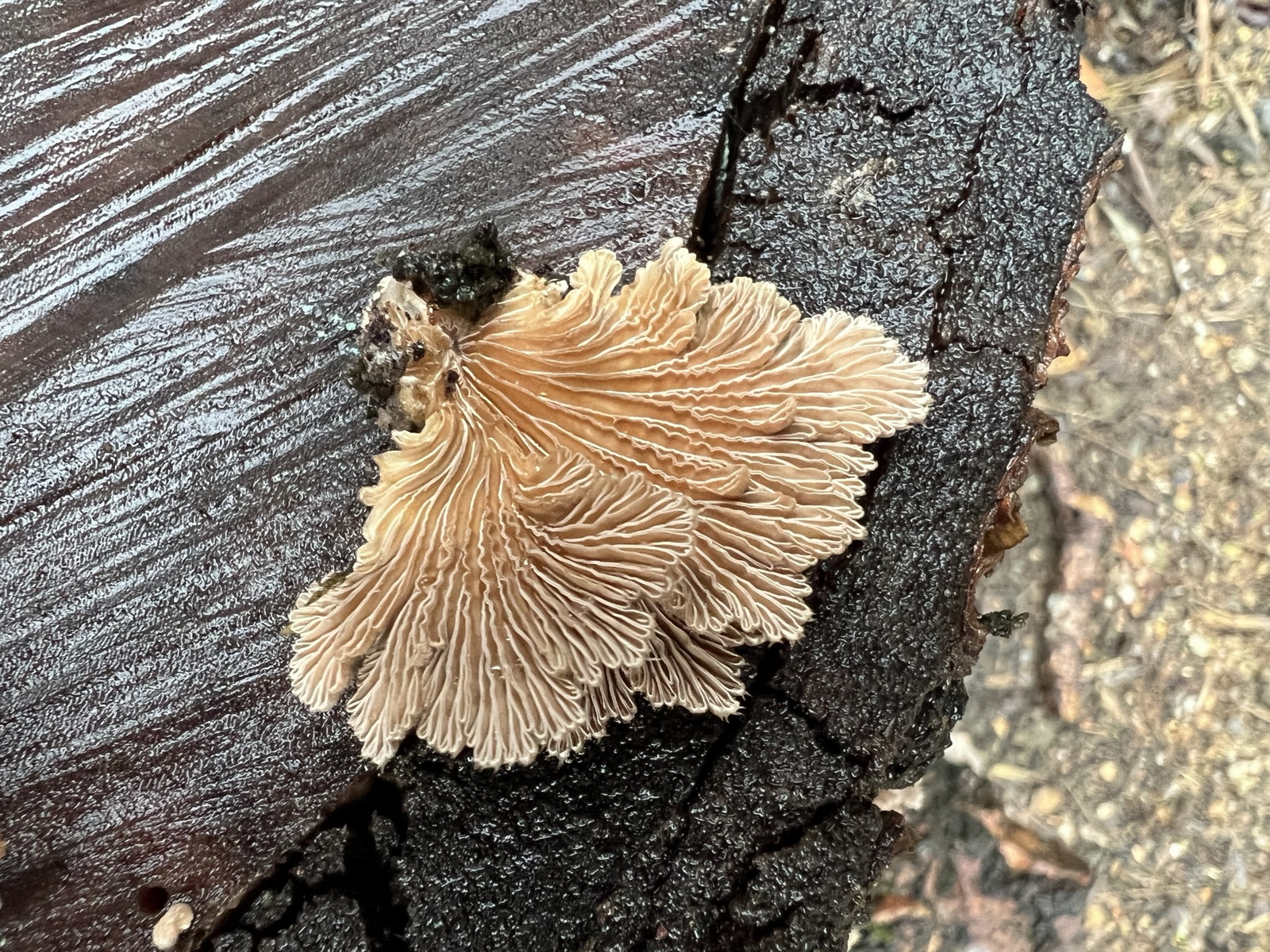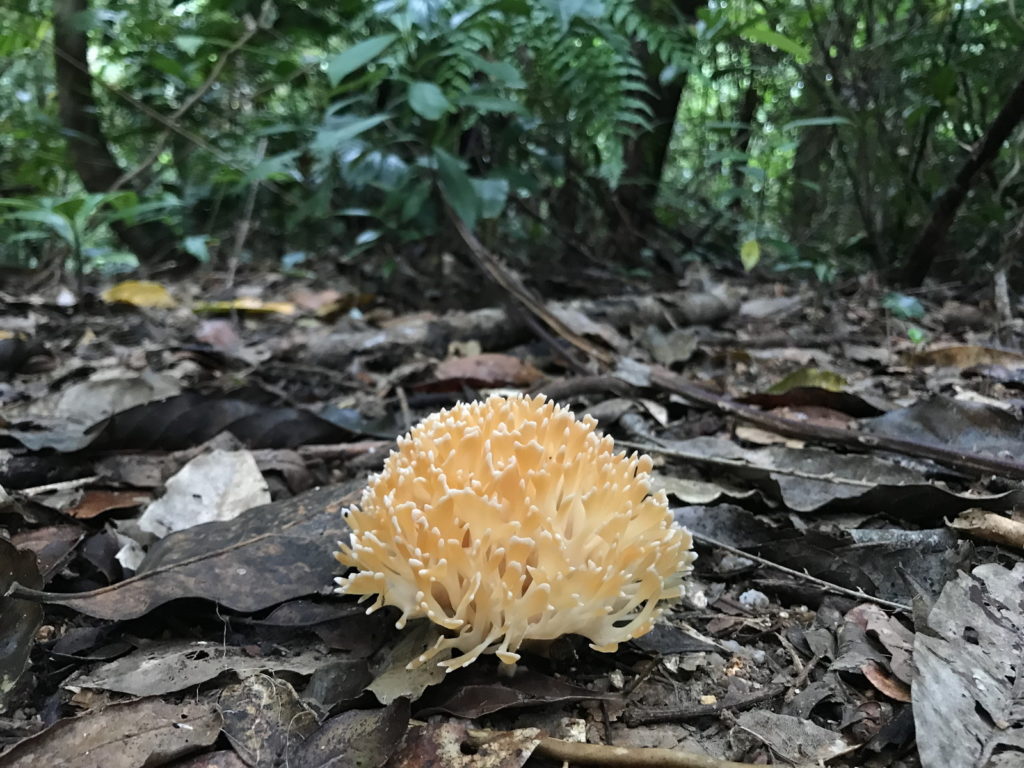The wet season was late to start this year and in the forest this was reflected in the relative paucity of mushrooms and other fungi during the initial months of this year. The recent late season rains have partly made up for this, although the cooler weather may have inhibited growth in some varieties. I have been keeping record of any mushrooms I have seen since January when I got back from travelling out west and decided to compile a gallery of the results, together with any preliminary identifications I have been able to glean from various references.
One of the highlights for me this year was a blue mushroom that I had seen in previous years but never photographed. This species is quite different from the one that Michele photographed last year (and which I misidentified as being the one pictured here). It has a more mat surface and more muted colour but is quite striking nonetheless.


Entolama hochstetteri is also referred to as E. virescens (a Japanese species) on many web pages and there may still be some uncertainty over which name is most appropriate (or indeed whether it is a separate possibly undescribed species). If you care to do some further reading there is a very readable article in the Queensland Mycologist 12(2):5-8. It’s an unusually fun read with historical anecdotes as well as a brief diversion to discuss the national origin of Pavlova! In New Zealand, where the species was first described, the indigenous name for E. hochstetteri is called “Werewere kokako” which translates as “Kokako’s wattle” referring to the similarity in colour between the mushroom and the facial wattle of the Kokako, a native wattlebird, both of which are featured on the NewZealand $50 note.
The mushroom below (Schizophylllum commune – split gill fungus) is currently still visible growing on old pine logs (ask Lynda Radbone if you would like to see it). Michele Bird first noticed it and its unusual shape led us to think it might be something rare and unique. However it turns out to be a common cosomopolitan species often seen growing on dead wood in gardens and forests. has a shape and texture quite unlike most other mushrooms. it gest its name from the fact that the gills on the undersurface can split lengthwise. The upper surface can be covered in fine white “fluff” and its colour ranges from brown or cream to pale green. This mushroom is considered pathogenic with recent research indicating it can cause respiratory diseases. DO NOT SMELL IT!




Coral fungi are always a joy to see, and this one found by Juanita on the H-track is no exception. It is probably a member of the genus Aphelaria.

Identification of a mushroom usually requires a check of the undersurface of the cap to determine if it has gills (Agarics) or fine pores (Boletes or Polypores) The mushroom below is a typical bolete. It most probably belongs to the genus Boletellus and looks like the “shaggy cap” B. emodensis. I’ve found this a couple of times along dryer sections of the Witts lookout track and the Bluegum track. Its attractive pink flakey cap and yellow undersurface are very distinctive.


Little red mushrooms are a common sight along the forest tracks poking up from the leaf litter. This one is probably Hygrocybe miniata, which has a mat red surface, a cap that becomes flattened or even concave as it grows larger.


A few other specimens found over the last few months are set out below – with names where I have found something likely.










Chicken of the woods






Text and photos (unless indicated) by Jamie Oliver

The split gill fungi on the pine logs at my block has taken off again with the recent rains. Anybody is wecome to go up and have a look.
Thanks for the very interesting and informative article Jamie. Fantastic photos too. What a great variety of fungi we have in and around the village! Thanks for identifying the split gill fungus recently observed on the pine logs. While it looks very attractive I definitely wont be smelling it, given that it is pathogenic.
An amazing set of photographs of a little-seen world. Thankyou for sharing, Jamie.
A vey interesting article Jamie. I wonder if a copy could be laminated and put on the notice board on the Village hall verandah. When any of us see different Fungi we can check to see if you have it….